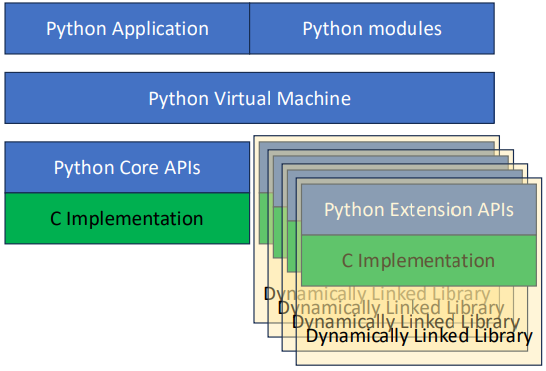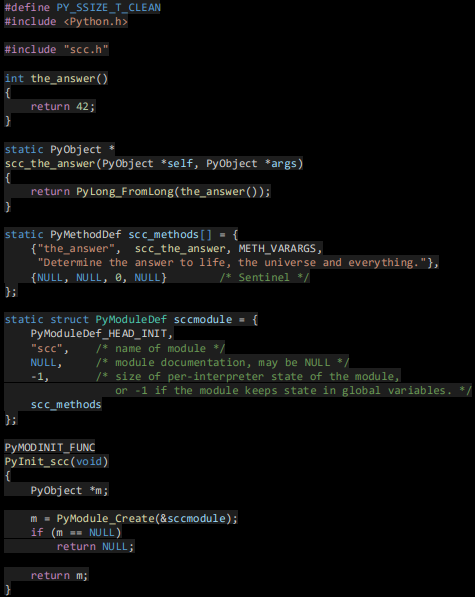High Performance Python
1/13
There's no tags or description
Looks like no tags are added yet.
Name | Mastery | Learn | Test | Matching | Spaced |
|---|
No study sessions yet.
14 Terms
Strengths of Python
Flexible and powerful in-built type system
Arbitrary data size (ints, strings, lists etc.)
Objects, modules, inheritance etc.
Fast to develop, can try scripts in REPL
Extensibility and wide range of libraries available
Downsides to Python
Type conversion based on context
Overhead as variables ‘change type’
Magic behind the scenes to support abstraction (arbitrary sized integers, arbitrary length strings…)
This costs space and time…
Trade-offs
The flexibility comes at a cost (performance)
Python source is translated to python bytecode (.py -> .pyc), pyc updated on first run
The bytecode is interpreted at runtime
Speeding things up
We will need to trade some of the flexibility to get more performance
Introduce fixed types so managing memory is leaner and more efficient
Get closer to the machine architecture
either use other program components written in a compiled language
Or, ‘compile’ our python in some way
Working with other Processes is Useful when
using python to ‘script’ other things, e.g. automation of routine system tasks;
running toolkits written in other languages (such as C)
Pros of Process Level Integration
verbose API designed for humans
simple to use
cross platform
very versatile
Cons of Process Level Integration
start-up cost of process
difficult to maintain state outside python script
low level of granularity
difficult to efficiently pass large amounts of data efficiently
Optimise for the common case of Python and C
Actively try to create programs that utilise multiple programming languages
Allow each language to excel at what it does best
Write user facing scripts in Python
Write the high-performance modules in a language that is more computationally efficient
Create Foreign Function Interfaces between them…
Foreign Function Interfaces
A function that executes code written in a different programming language
Provides finer grained integration of library code into applications than process-based approaches
C is the most common language to interface with, as it complements Python well
Typically implemented through dynamically linking C libraries into Python interpreter (Java and C# can do this too)

CPython Extensions
CPython extension modules are just shared object C libraries (.so files, or DLLs)
Placed in a well know search path, defined by sys.path…
The Python VM exposes a set of C library functions and types (classes/structs) that allow:
Python modules and functions to be created
Marshalling of types between C/Python
Initialization callbacks

Example of CPython Extension
C code that makes up the functionality of the module
Wrappers methods for each underlying C function. Note standardized naming convention and parameter list
Initialization callback function, that registers a table of exposed functions to the Python VM
Explicit functions to manage type conversion between C and Python

Using CPython Extensions
Compile as a dynamic library
Include Python VM library
Place resultant library in the Python search path
Use like any other Python module
Limitations of CPython
Powerful, but quite Complex to write
Developer needs to handle memory management (ref counts!)
Exception handling requirements need to be obeyed
Only works with CPython…
3 Higher Level Approaches to CPython
Using the ctypes library
The C Foreign Function Interface or CFFI
The Cython language